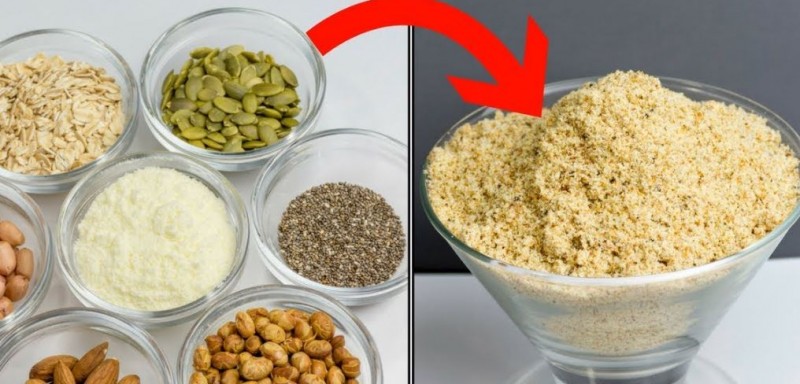
In the quest for a healthier lifestyle, protein consumption has gained significant (How to Protein Powder at Home) attention. Protein, often referred to as the "building block" of the body, plays a crucial role in muscle repair, immune function, and overall well-being. While store-bought protein powders are readily available, crafting your protein powder at home can be a cost-effective and satisfying alternative. In this article, we delve into the art of creating a homemade protein powder using natural ingredients that won't break the (How to Protein Powder at Home) bank.
The Importance of Protein
Protein is an essential macronutrient required for various bodily functions. It aids in building and repairing tissues, producing enzymes and hormones, and maintaining healthy skin, hair, and nails. Athletes and fitness enthusiasts often focus on protein intake to support muscle growth and recovery after intense workouts. However, commercial protein powders can be pricey and may contain additives or artificial ingredients that some prefer to avoid.
Making Your Homemade Protein Powder
Creating your protein powder at home offers the advantage of complete control over the ingredients, ensuring you consume a natural and wholesome product. Here's a step-by-step guide to crafting your DIY protein powder:
Choose a Protein Base
Selecting a protein-rich base is the foundation of your homemade protein powder. Common options include various legumes, nuts, and seeds:
a. Lentils: These humble legumes are rich in protein and dietary fiber. Roast lentils until they turn golden brown, then grind them into a fine powder.
b. Chickpeas: Chickpeas are another excellent legume choice. Roast them before grinding for a nutty flavor profile.
c. Almonds: Almonds are a great source of healthy fats and protein. Opt for blanched almonds for a smoother texture.
d. Pumpkin Seeds: Pumpkin seeds, or pepitas, offer protein and valuable minerals. Lightly toast them before grinding.
Enhance with Complementary Ingredients
To elevate the nutritional content and flavor of your homemade protein powder, consider incorporating complementary ingredients:
a. Flaxseeds: Flaxseeds are rich in omega-3 fatty acids and fiber. Grind them to add a nutritious boost.
b. Chia Seeds: Chia seeds are packed with protein, fiber, and antioxidants. Grind them for a nutrient-rich addition.
c. Cocoa Powder: For a chocolatey twist, add cocoa powder. It not only enhances the taste but also provides antioxidants.
d. Cinnamon: Cinnamon adds warmth and depth to the flavor while offering potential health benefits.
Flavor and Sweetness
To tailor your protein powder to your taste preferences, experiment with flavorings and natural sweeteners:
a. Vanilla Extract: A dash of vanilla extract can impart a delightful aroma and flavor to your protein powder.
b. Stevia: Stevia is a calorie-free, natural sweetener that can add a touch of sweetness without spiking blood sugar levels.
c. Dried Fruits: Consider adding dried fruits like dates or apricots for a subtle sweetness and added nutrients.
Mixing and Storing
Once you've selected your ingredients, combine them in a food processor or blender. Blend until you achieve a fine, uniform powder. Store your homemade protein powder in an airtight container in a cool, dark place to maintain its freshness.
Benefits of Homemade Protein Powder
Crafting your protein powder at home offers several benefits:
Cost-Effective: Homemade protein powder is often more budget-friendly compared to store-bought options, which can be quite expensive.
Customizable: You have complete control over the ingredients, allowing you to tailor the protein powder to your dietary preferences and taste.
Avoid Additives: Commercial protein powders may contain additives, preservatives, and artificial flavors. Creating your own powder ensures a natural, additive-free product.
Nutrient-Dense: By incorporating a variety of nuts, seeds, and legumes, you can create a protein powder that's not only rich in protein but also abundant in essential nutrients.
Eco-Friendly: Making your protein powder reduces packaging waste associated with store-bought options.
Creating homemade protein powder is a rewarding endeavor that enables (How to Protein Powder at Home) you to take charge of your nutrition while saving money. With a variety of protein-rich bases, complementary ingredients, and flavorings, you can craft a personalized protein powder tailored to your preferences. Whether you're an athlete looking to support muscle growth or simply aiming to lead a healthier lifestyle, this DIY approach empowers you to nourish your body with wholesome ingredients, free from additives and artificial substances. Embrace the art of crafting your nutrient-rich body fuel at home and savor the benefits it brings to your overall well-being.
Fertilizers for Kharif Planting; States Urged to Counter Urea Diversions: Mandaviya
Health Benefits of Bhutta During Rainy Days: 8 Reasons to Enjoy Corn Daily